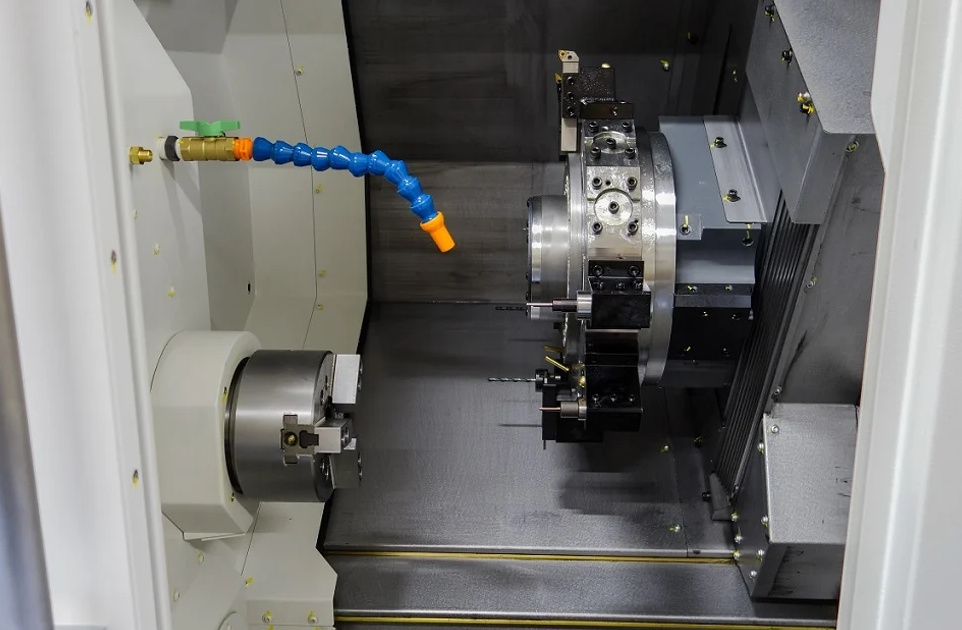The machining process of CNC turning is similar to that of ordinary lathes, but since CNC is a clamping process, all turning processes are continuously and automatically completed, so the following aspects should be paid attention to.
1. Reasonable Choice Of Cutting Parameters
For high-efficiency metal cutting, the material being processed, cutting tools, and cutting conditions are the three major factors. These determine the processing time, tool life and processing quality. The economical and effective processing method must be a reasonable choice of cutting conditions.
The three elements of cutting conditions: cutting speed, feed rate and cutting depth directly cause tool damage. As the cutting speed increases, the temperature of the tool tip will increase, which will cause mechanical wear, chemical wear, and thermal wear. As the cutting speed increases, the tool life will be reduced by 1/2.
The relationship between the feed conditions and the wear on the back of the tool occurs within a very small range. However, the feed speed is high, the cutting temperature is increased, and the back wear is large. Its influence on the tool is smaller than the cutting speed. Although the cutting depth has less influence on the tool than the cutting speed and feed rate, the hardened layer of the cutting material will also affect the life of the tool when cutting at a small cutting depth.

The user should select the cutting speed according to the material, hardness, cutting state, material type, feed amount, cutting depth, etc.
The selection of suitable processing conditions is based on these factors. Regular, stable wear and longevity are ideal conditions.
However, in practice, the choice of tool life is related to tool wear, changes in the size of the machined, surface quality, cutting noise, and machining heat. When determining the processing conditions, research should be carried out according to the actual situation. For materials that are difficult to process, such as stainless steel and heat-resistant alloys, blades with good rigidity or coolant can be used.
2. Reasonable Choice Of Tools
1) When rough turning, choose a tool with high strength and good durability to meet the requirements of large back-grabbing and large feed when rough turning.
2) When finishing turning, choose tools with high precision and good durability to ensure the requirements of machining accuracy.
3) In order to reduce the tool change time and facilitate tool setting, machine-clamped tools and machine-clamped blades should be used as much as possible.

3. Reasonable Fixture Selection
1) Try to use general fixtures to clamp the workpiece, avoid using special fixtures;
2) The positioning datums of the parts coincide to reduce the positioning error.
4. Determine The Processing Route
The processing route refers to the movement track and direction of the tool relative to the part during the processing of the CNC machine tool.
1) It should be able to guarantee the processing accuracy and surface roughness requirements.
2) Shorten the processing route as much as possible to reduce the tool idle travel time.
5. The Relationship Between Processing Route And Processing Allowance
At present, when the numerical control lathe has not yet reached the general purpose, the excess margin on the blank, especially the margin containing the forging and casting hard skin layer, should be arranged on an ordinary lathe for processing. If you must use a CNC lathe for processing, you must pay attention to the flexible arrangement of the program.
6. Fixture Installation Point
At present, the connection between the hydraulic chuck and the hydraulic clamping cylinder is achieved through a tie rod. The clamping points of the hydraulic chuck are as follows: first remove the nut and pull tube on the hydraulic cylinder with a moving hand, and pull it out from the rear end of the spindle, then use the moving hand to remove the chuck fixing screw, and then remove the chuck.
The wiper on the tool refers to a short blade parallel to the tip of the tool, which is ground in the direction of a small deflection angle behind the tool blade. It is mainly used for primary and secondary cutting after cutting, which is equivalent to removing burrs and other scars in the finishing process. The purpose is to improve the surface roughness of the workpiece, and it is mostly used for finishing tools.


